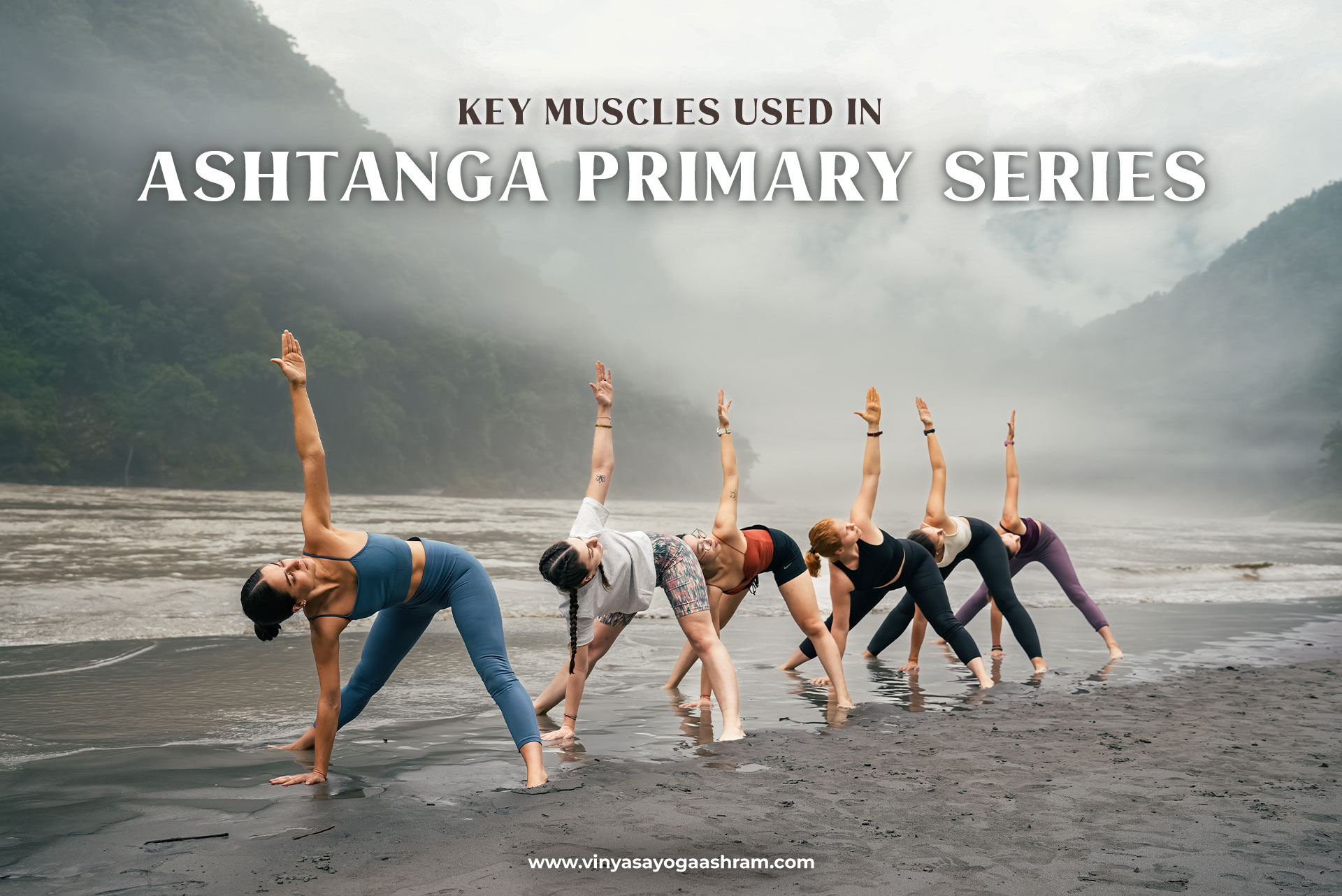
Ashtanga Primary series, also known as ‘Yoga Chikitsa’ developed by K. Pattabhi Jois is a modern yoga practice where a series of postures are practiced through the synchronization of breath (ujjayi) and movement. Known as moving meditation, this yoga system is of growing interest as a Yoga Teacher training Program in Rishikesh. Vinyasa Yoga Ashram, Rishikesh focuses on Ashtanga Yoga to help practitioners develop inner strength, flexibility, and attention as well as a stronger bond within themselves.
Structure of the Primary Series
The 75 postures that make up the Primary Series are arranged into standing, seated, and finishing poses. Vinyasa, a technique that combines movement and breath, ties each pose together.
- Standing Postures: The series begins with a sequence of standing poses. By strengthening the legs, core, and spine, these poses encourage balance and appropriate alignment.
- The standing series transition into seated poses that encourage surrender and reflection by working the hips, hamstrings, and spine.
- The series ends with the finishing sequence that includes inversions and restorative postures facilitating relaxation and integration.
Although this vigorous practice builds strength, flexibility and stamina throughout the body, there are some key muscles that need to be engaged to access the full range of motion as well as create stability in a posture.
The importance of proper muscle engagement
- Correct muscle engagement is crucial in asana practice to avoid placing unnecessary strain on the joints and ligamnets. For example, using the legs and core helps stabilize the pelvis and spine in standing poses such as Warrior II.
- Yoga is a combination of strength and flexibility, a balance of these two is important to get the full benefits of yoga practice, which is the primary focus in Yoga Teacher Training Program in India. For example, strengthening the legs and increasing hip and lower back flexibility can be achieved by contracting the quadriceps and hamstrings in positions like Chair Pose.
- Using your muscles intentionally promotes a stronger mind-body connection, allowing practitioners to tune into their bodies with increased awareness, which not only builds health but avoids injuries.
Primary series particularly includes forward folds and hip opening asanas, also emphasizing stretching the spine, strengthening the core, arms and legs. These muscles are primarily used in the primary series of Ashtanga Yoga:
- Leg muscles
- Hamstrings: The hamstrings originate from the pelvis and are attached to the tibia and fibula at different. Hamstrings are responsible for hip extension and knee flexion.. Tight hamstrings can strain on the pelvis and change the posture of the spine, also leading to lower back pain. Hence, hamstring flexibility is key to safely improve yoga postures.
Some postures that can help enhance hamstring flexibility are Adho Mukha Svanasana, Paschimottansana, and Parsvottansana. - Quadriceps: Also called the “quads,” they are a group of four muscles situated at the front of the thigh. These include the rectus femoris, vastus lateralis, vastus medialis, and vastus intermedius. Originating from several locations throughout the hip and femur, they converge into a single tendon that joins to the patella and extending down to the tibia. They help in knee extension and hip flexion, stabilising the knee joint. Virabhadrasan 1 and Utkatasana are good poses to strengthen the quadriceps.
- Gluteal muscles: Also known as the “glutes,” the gluteus maximus, gluteus medius, and gluteus minimus are the three primary muscles that make up the gluteal muscles. These muscles extend the hip, rotate the thigh internally and externally, abduct the thighs, and stabilize the pelvis.
Stretching and gluteal strength are necessary for Virabhadrasan II, Setu Bandhasan, and Supta Padangusthasan.
- Hip muscles
- Hip flexors: These are a collection of muscles at the front of the hip that stabilize the spine, assist in hip flexion, and help raise the knees toward the chest. This group consists of psoas major, iliacus, the sartorius, and the rectus femoris.
The hip flexors are stretched in Baddha Konasana, Marichiasana, and Virabhadrasan I. - Adductors: The adductor muscles are a set of muscles in the inner thigh that are essential for hip flexion, rotation, and adduction as well as for stabilizing the hip joint. They also help with knee flexion.
The adductor muscles are used in Baddha Konasana and Prasarita Padottanasana.
- Upper body
- Deltoids: This group of three shoulder-located muscles includes the anterior, lateral, and posterior deltoids. Together, they enable external and internal rotation of the shoulders, abduction, extension and flexion of the shoulder.
Uttitha Parsvakonasana and Adho Mukha Svanasana both call for deltoid strength. - Latissimus dorsi: Also referred to as the “lats,” this muscle spans the lower back and is essential to many upper body movements, being one of the largest muscles in the human body. It is distinguished by its characteristic V-shape, in charge of several functions like shoulder adduction, shoulder extension, internal rotation of the shoulder, and spine and pelvic stabilization.
The lats are stretched with Urdhva Mukha Svanasan, Trikonasan, and Utitha Parsvakonsana. - Triceps Brachii: Often referred to as the triceps, this muscle is a noticeable structure at the back of the upper arm. It is made up of three separate heads: the long head, lateral head, and medial head. It helps in shoulder and elbow extension and gives strength when pushing.
Triceps strength is used in Chaturanaga Dandasan, Adho Mukha Svanasan, and Bhujapidasana.
- Core muscles
- Rectus Abdominus: Situated in the anterior wall of the abdomen, it is frequently called the “abs,” known for its function in core stabilization. This is a long, flat muscle that runs the length of the abdomen vertically, supporting spine flexion, core stabilization, postural support to lessen back discomfort and injuries, and pelvic movement that facilitates twists and bends.
In Chaturanga Dandasana, Paschimottanasana, and Navasana, Abs are utilized. - Transverse Abdominus: One of the most important core muscles, the transverse abdominis is critical for preserving posture and stability, which is necessary for all-around functional movement and the avoidance of injuries. Because the TVA’s muscle fibers are oriented horizontally, it can support the spine and apply intra-abdominal pressure, supporting the internal organs. The pelvic floor muscles are also supported by it.
The TVA muscles are used in Navasana, Setu Bandhasana, and Utkatasan. - Obliques: An essential part of the core musculature, the oblique muscles are involved in posture, movement, and stability. The external and internal obliques are the two primary groupings of these muscles, which are found on the sides of the abdomen. The muscular fibers on either side of the external oblique form a “V” shape by extending inward and downward. The fibers in the internal obliques produce a “A” shape by running upward and inward.
In asanas like Uttitha Trikonasana, Parivritta Trikonasana, and Navasana, obliques are essential.
The Primary Series’ emphasis on developing strength and flexibility, which is built through the Yoga Teacher Training Course in Rishikesh, can have a big impact on and beyond the mat. Elevated muscle tone and endurance have the potential to improve posture, increase metabolic health, and improve overall physical fitness. Additionally, this series improves balance and coordination, which are useful in day-to-day tasks.

